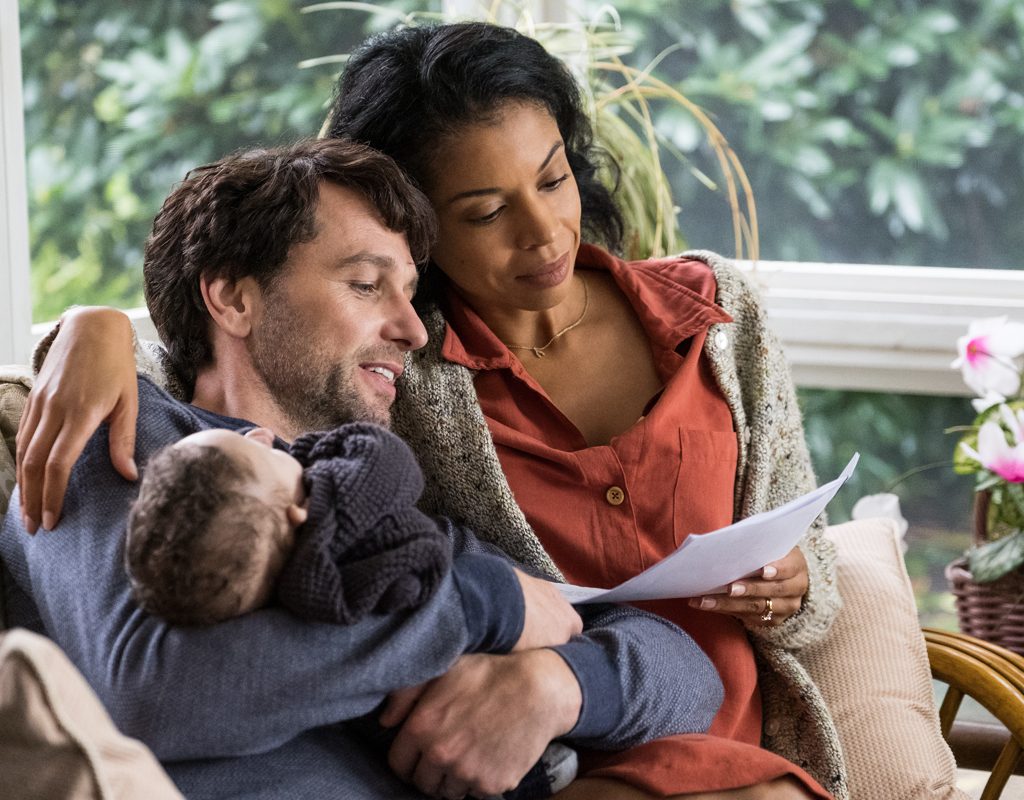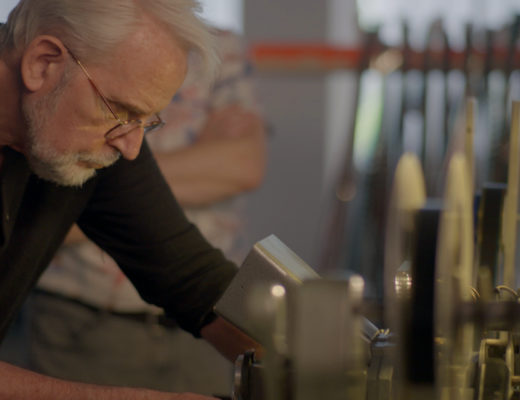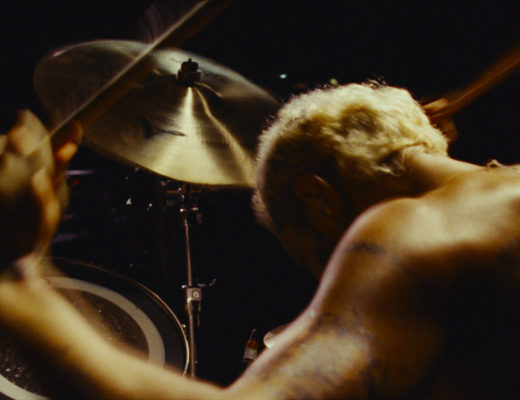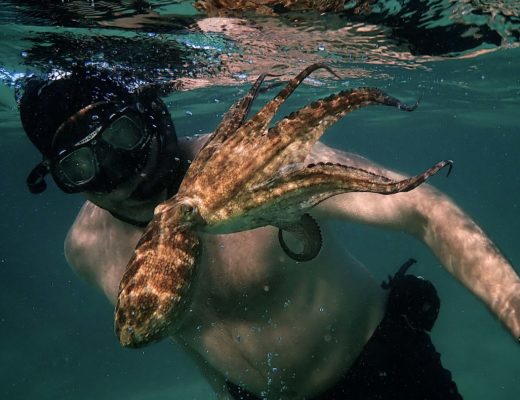In 2011, Anne was nominated for an ACE EDDIE for her editing of an episode of Nurse Jackie. In 2013, she won an ACE EDDIE for her editing of an episode of The Newsroom.
Her other work includes the films Can You Ever Forgive Me?, Dirty Grandpa, Adventureland and the TV shows, Succession and Damages among many others.
Today we’re discussing her movie, A Beautiful Day in the Neighborhood. I start the interview describing an interview I had heard with Anne’s director, Marielle Heller.
This interview will be available as a podcast December 3rd, 2019.
(This interview was transcribed with SpeedScriber. Thanks to Martin Baker at Digital Heaven)
HULLFISH: I just heard an interview with your director, Marielle Heller, and she was describing the difference between Tom Hanks — who is expressive and moves his body, as many of us do, gesticulates with his arms — and Mr. Rogers, who is very still. He finds his position and he stays there. Does that kind of quietness change the way that you have to edit his performance?
McCABE: Yes. It’s a kids’ show. It’s for very young children. And Fred Rogers, when he thought about doing Mr. Rogers’ Neighborhood, wanted to look directly into the camera as if he’s speaking to a young child – maintaining eye contact and taking his time – giving them time to process what he said. I have children — they’re older now — but when they were young, I was always seeking out these television shows that were calm. Not a lot happens because very young children when they’re very young, need something slow.
So, for Tom Hanks’ performance, Marielle was always coaching him to go slower — to take his time. And of course, that’s a challenge in the edit, because, you don’t want it to go on forever. But the opening scene, Tom Hanks takes his time. He speaks slowly and it’s almost like you’re teaching the audience how it’s going to be. It’s not going to be a quick-paced, slick, quick edit kind of movie.
HULLFISH: When you were trying to decide on the delivery of a line or the pacing of when he speaks compared to someone else speaks. Did you feel like you needed to regulate that in Mr. Rogers’ time instead of a faster-paced conversation or interaction?
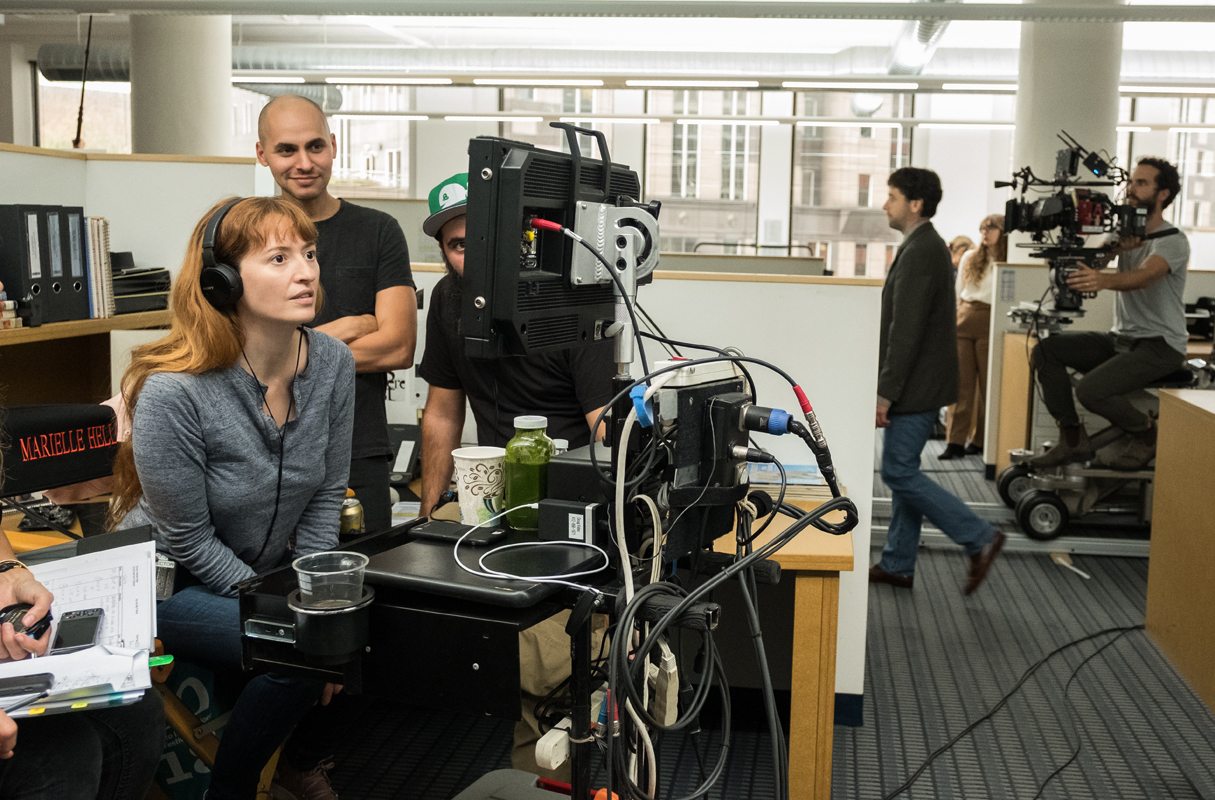
McCABE: Oh, for sure. I was very much embracing awkward pauses. That was the thing about Fred Rogers. He didn’t mind having a pause. There are many scenes in the movie where there’s an uncomfortable pause and it feels like the tension rises. It’s sort of counterintuitive in a way, but having silence actually creates more drama rather than less.
SPOILER ALERT:
There’s a good example later in the movie when Chris Cooper is basically on his deathbed and his family is around him and he brings up the subject that he might not be around anymore, and everyone in the room stops because they don’t really want to talk about it. They don’t know what to say, and there’s a long pause. The audience really feels it. It makes everything screech to a halt. And then, Tom, as Fred, says, “It’s OK to feel this. It’s OK to talk about death. It’s okay to have these uncomfortable feelings.” Tom was very much coached by Marielle to be slower and patient and take his time. Those were definitely the takes that we were looking for while we were cutting his performance.
END SPOILER ALERT
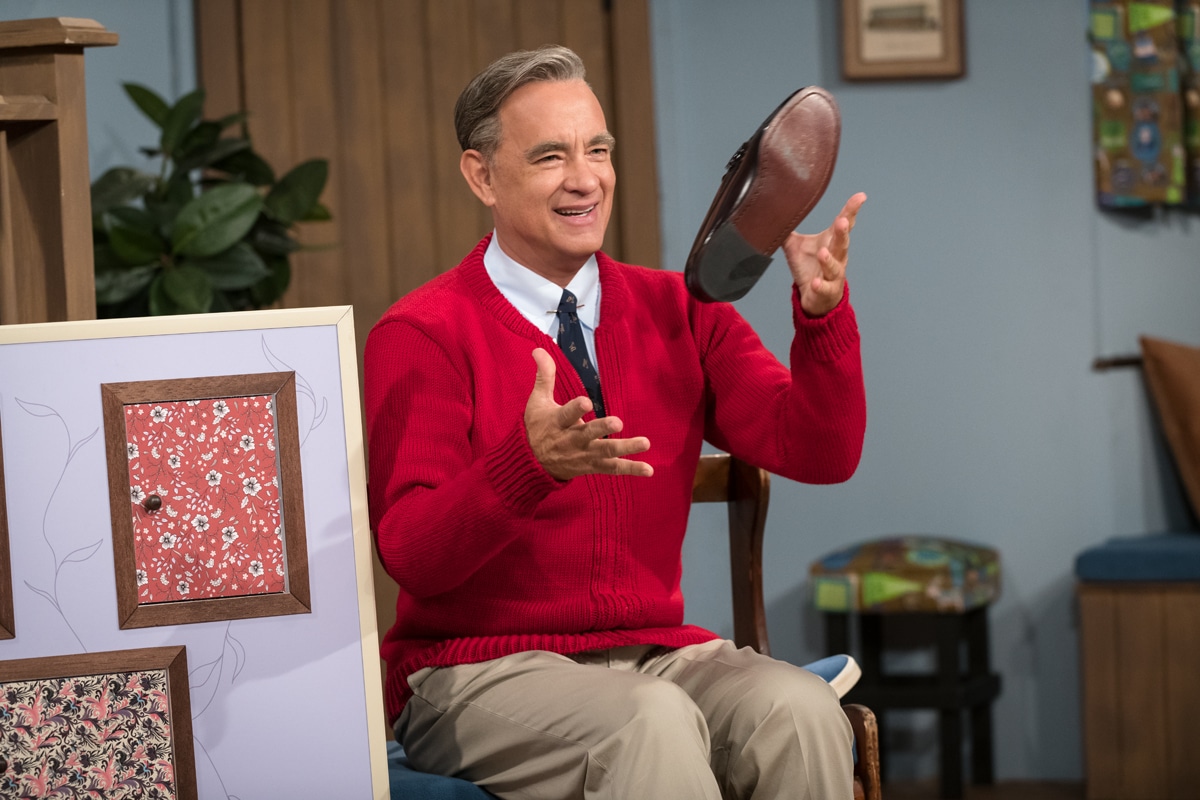
HULLFISH: Did you feel like you had some kind of obligation or special responsibility because you were dealing with a real person?
McCABE: Oh, for sure. Mr. Rogers has an incredible following and people are very protective of him, so we felt a huge responsibility to be respectful to his message and the original show. Marielle and Tom Hanks weren’t going to do some imitation of him. They weren’t going to try to be too southern or do an accent or copy the way he spoke verbatim. It was important to honor him, but not do an imitation that might feel cartoonish.
We were respectful of the show, too, because everyone who worked on it did a ton of research and the people who were involved in the original show were very much involved — mostly during production because they were in Pittsburgh.
In fact, some of the actual people are in the movie as extras. In the scene in the restaurant when it pans across people listening, Joanne Rogers, his actual wife is in the shot and the real Mr. McFeely, and the real Bill Isler. It was important to keep them connected to the show. Also when I edited scenes from the show within the movie, I tried to maintain that style, which was not slick. It felt very hand-made, so the cuts were not quick. Sometimes there’s a little delay.
There’s a section when we go into the Picture Picture about how people make a magazine. When we were cutting that, we very much tried to mimic the style of the show, with the same length of dissolves, to honor the way that the show was. This is not a fast-paced moment.
HULLFISH: I’ve got access to a couple of scenes that the studio gave me. Can you tell me a little bit about cutting this scene and seeing the unusual nature of Mr. Rogers’ performance and delivery and how you have to deal with that?
McCABE: He was always very focused on the person that he spoke to. When he was talking to somebody, he was only thinking about that person. His mind was not racing to what do he needed to do next. And I think it was actually quite frustrating on the actual show because people would come to visit and he would get very focused on talking to somebody and listening. He was a great listener.
So in that scene, he is talking to a young child with a medical problem. He’s listening to the kid and everyone in the crew is waiting around to start shooting and waiting for him to finish up. And finally he finishes up and he starts the tent sequence, but then he sees Lloyd, and they stop again. He goes to talk to Lloyd and everyone on the set is groaning.
It’s kind of a fun, awkward moment, too, for Lloyd, who is the person who is stopping the production. But then the scene goes on to show Mr. Rogers trying to put up a tent. It’s a real thing that happened where he had trouble setting up a tent. It started to make the late-night shows. But Mr. Rogers had a good sense of humor about himself, but in the movie, it’s an example of showing how he was okay with making a mistake. It’s all right to make a mistake. Children also need to see that. You’re not going to get it right every single time.
HULLFISH: Can you talk to me about what the movie REALLY is about? What is the theme? And then how did that affect your editing to know that that was the theme of the movie?
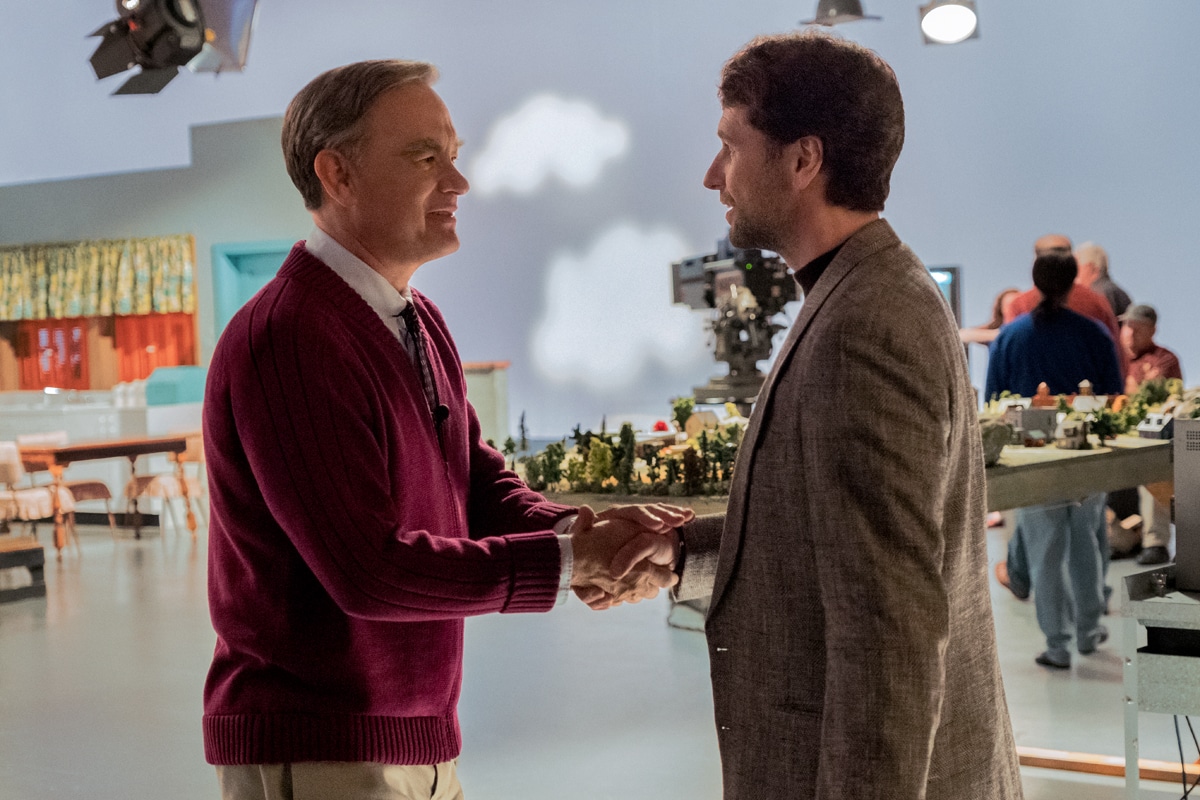
McCABE: Well, I think the themes of the movie are really about patience, kindness, acceptance, and understanding. And it’s also somewhat about redefining masculinity because it’s about two men and two fathers and people who have suffered childhood trauma. The movie allows these men to be vulnerable and talk about their feelings and come to terms with how being a man and a father is not defined in a way where you always have to be strong.
Bookended around working on this movie, I was working on the show Succession which I really, really enjoyed cutting, but it’s about these back-stabbing people. Then I went on to Mr. Rogers where it’s all about acceptance and forgiveness. (Director) Mari and I are both parents and we really took away — while we were cutting the movie — feeling like it was important to be more accepting and forgiving and take our time and patience and to become better listeners.
HULLFISH: You mentioned Succession. That had to be “cultural whiplash” to go from one to the other.
McCABE: (Laughs) Yes, for sure. I love working on different types of shows and movies and alternating between television and film because I think it keeps you very fresh in a way as though you’re looking at this with new eyes, and also just the different types of material. Creatively, it’s so much fun to work on all different types of material and different ways that things are shot.
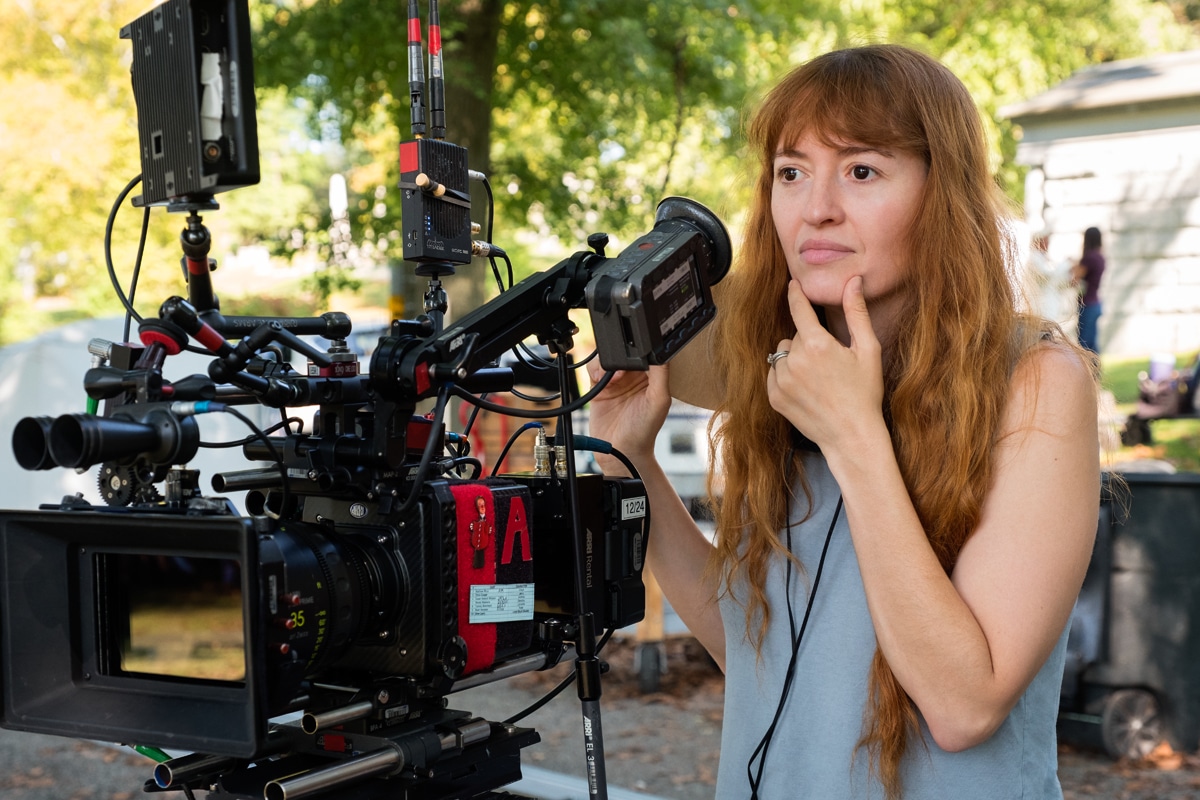
These two things could not be more different. Succession — the way that is shot — the cameras are always moving. There are so many cameras, so many different angles. You’re always crossing the line. You’re cutting for performance and it’s all very quick. I joked with the showrunner — Jesse Armstrong – that it was a big change from Mr. Rogers, and he said, “No, no! It’s very similar because it really shows people how not to act.”
The pacing on Mr. Rogers was so different. It was important to take our time. Of course, you still need drama. And pacing was hugely important. You don’t want it to drag or feel slow, but it had an entirely different pace where the pauses and the scenes just have a lot of weight to them even in the silences.
HULLFISH: Do you find that when you switch that you had to re-cut some of your scenes because you found that you cut them too much like your previous project or did that not happen?
McCABE: No, that definitely didn’t happen. I actually did the movie, Can you Ever Forgive Me, with Marielle Heller, and then I did season one of Succession, then I did Mr. Rogers, and then I did an episode in season two of Succession, so I’d already work with (Neighborhood director) Mari, but I think it’s really more about: you see the footage and the script and they tell you about what needs to be happening.
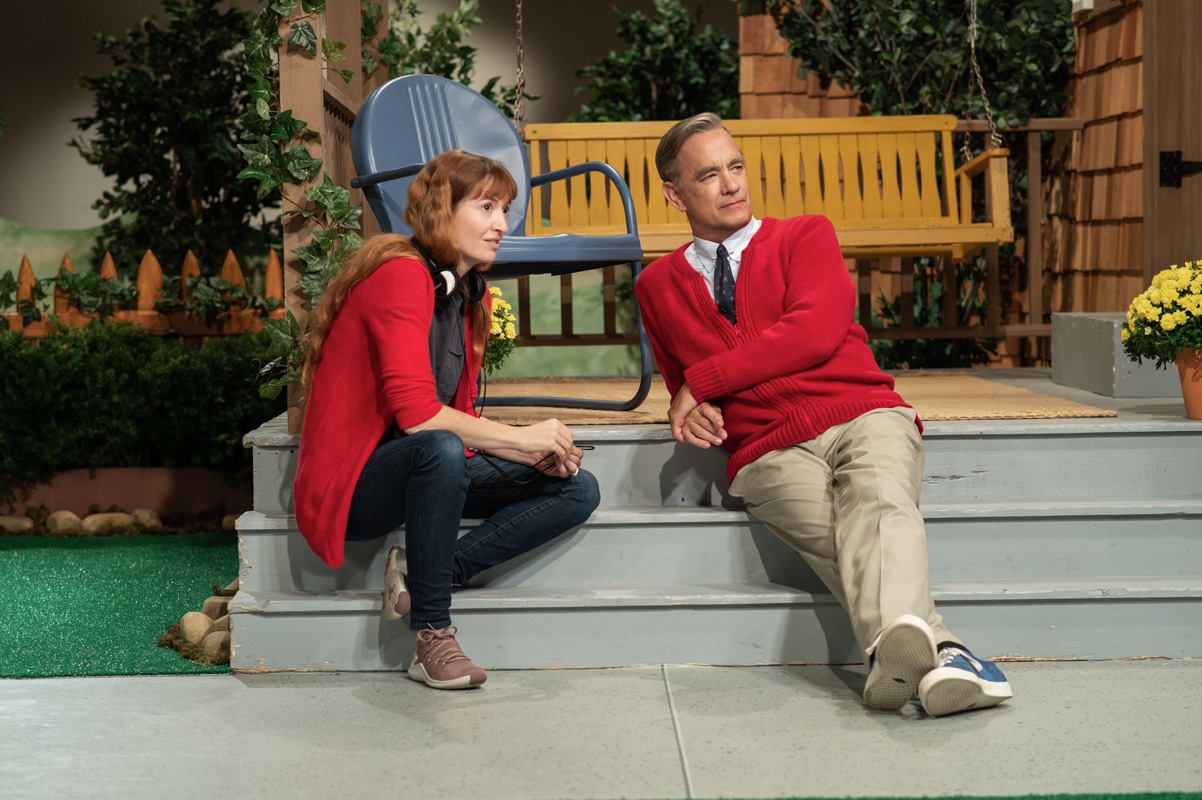
Succession is drama but it has a lot of humor, and with that kind of show my instinct is: this is fun. In Season 2 the episode I did had a scene where Kendall is doing this ridiculous rap where he’s trying to impress his dad. For me, I’m watching that rap, and I want to see what the people’s reactions are. There’s a comic instinct to it.
With the movie, it is much more like: how am I feeling here? I was really putting myself in Lloyd’s shoes and trying to process how he felt – meeting Mr. Rogers. It was a much more personal, emotional journey cutting that.
HULLFISH
You mentioned that the film tells you how it needs to be cut… The film speaks to you about what you need to do. Can you explain that concept any more in-depth than that, or provide an example of what you mean?
McCABE: Definitely. So, there’s a slight backstory. Lloyd is a journalist and he’s been assigned to do a little profile on Mr. Rogers. This is based on a true story of a real journalist — Tom Junod — who did a profile in Esquire of the real Fred Rogers.
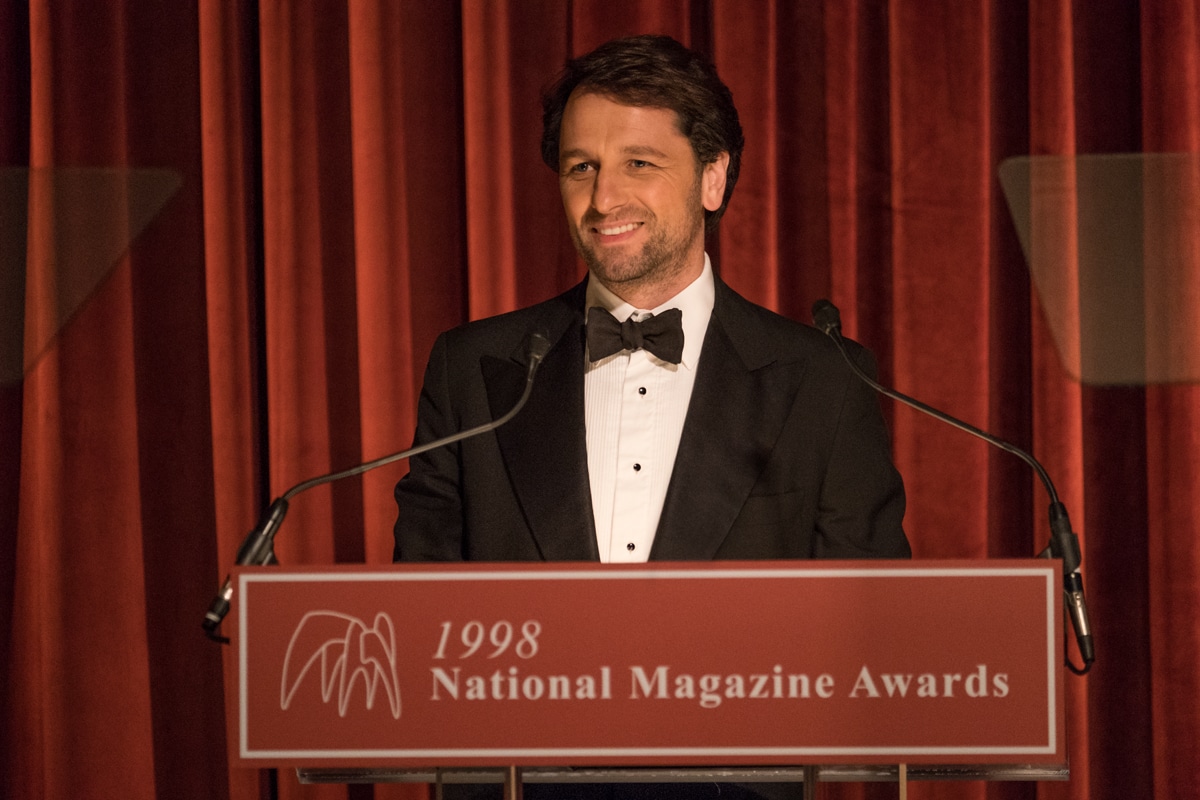
Lloyd’s character is not particularly thrilled to do this profile. He thinks that Mr. Rogers is a hokey kid-show guy. But when he goes to interview him, Mr. Rogers starts to get under his skin and he starts to notice things about Mr. Rogers that are making him uncomfortable about things in his own life.
Lloyd is trying to get dirt on Mr. Rogers. He’s hoping he can crack him and that he can find out: “Is this guy for real?” So in this scene — after they have already had several interviews and Mr. Rogers has invited Lloyd to his apartment — as I was cutting the scene, I was thinking, “What would it be like if it were me?”
When I was a kid I remember my cynical older brothers thought Mr. Rogers was absurd. Here’s Mr. Rogers acting in that kind of hokey Mr. Rogers way and wants to show you puppets and he speaks in this sing-song voice.
I really put myself into Lloyd’s shoes. Lloyd is trying to dig into Fred and Fred starts asking about Lloyd’s life. During that discussion, we learn that there had been some childhood trauma with Lloyd, and you see Lloyd start to crumble a little bit.
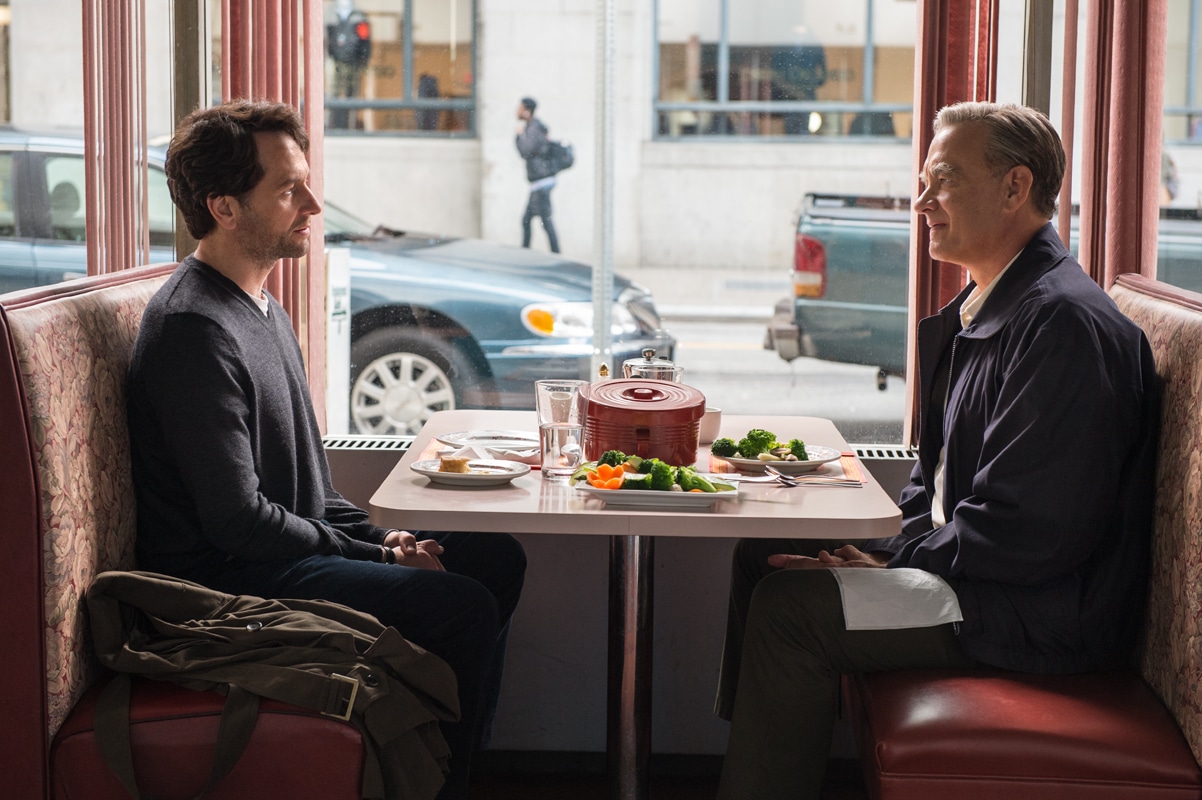
I absolutely put myself into Lloyd’s shoes. Similar to my own life, Lloyd’s character’s mother died when he was young, so I felt very, very close to Lloyd at that moment and cut the scene keeping that in mind.
So Lloyd starts to crumble and gets teary and Fred is really getting under his skin, but he can’t quite take it, so he turns it and shakes it out of himself and tries to start getting at Fred. And there’s also a comic element to this scene — and this is one of the reasons I’m so proud of the scene — is that it has so many different elements. There’s the trauma. There’s the fear and the sadness that’s revealed by Lloyd, but then there’s actually humor where Mr. Rogers is pulling out puppets and sort of shoving them into Lloyd’s face — something that he’s not expecting at all.
Tom Hanks does an incredible job. They both do. You see the tears in Lloyd’s eyes. But you also see the hurt in Tom’s eyes as Lloyd asks him some very difficult questions. He realizes that it’s not all so easy for him either. He’s really trying to do the right thing. He’s really doing his best to be a good father, but it’s a challenge. And then he talks about the difficulty with his teenage son.
HULLFISH: Can we talk about this scene?
McCABE: That’s the first interview. There’s a kind of sparring and a dance and a lot of it is done with looks and pauses. Lloyd is interviewing Fred and he thinks he’s gonna get the standard answers and he’s got this assignment that he’s not particularly thrilled about. But as he asks a difficult question, Fred turns it back onto Lloyd and asks, “Why do you have this black eye?” He doesn’t allow him to escape.
In this scene, Matthew Reese does an incredible job because you can’t quite look away. He can’t shy away from the tough questions. He can’t quite lie to Mr. Rogers. That’s the power of Tom Hanks too, he has this look. He’s really channeling Mr. Rogers by focusing and honing in and looking and having that empathy behind his eyes. It’s something that can’t be faked and we played around a lot with the timing of how long the pauses would be to keep the tension up, but also to not stretch it out too long.
HULLFISH: To show his empathy, you need that sense that Mr. Rogers is truly engrossed in listening to the other person. Did that affect how and when you went to reaction shots, to emphasize Mr. Rogers’ listening skills and honesty in caring for the other person? How do you represent that on film?
McCABE: For sure. We’re always playing around with the reaction shots and the pauses. And then, of course, like any movie — you’re an editor, too — there’s always so much more material. The first cut of the movie is always substantially longer.
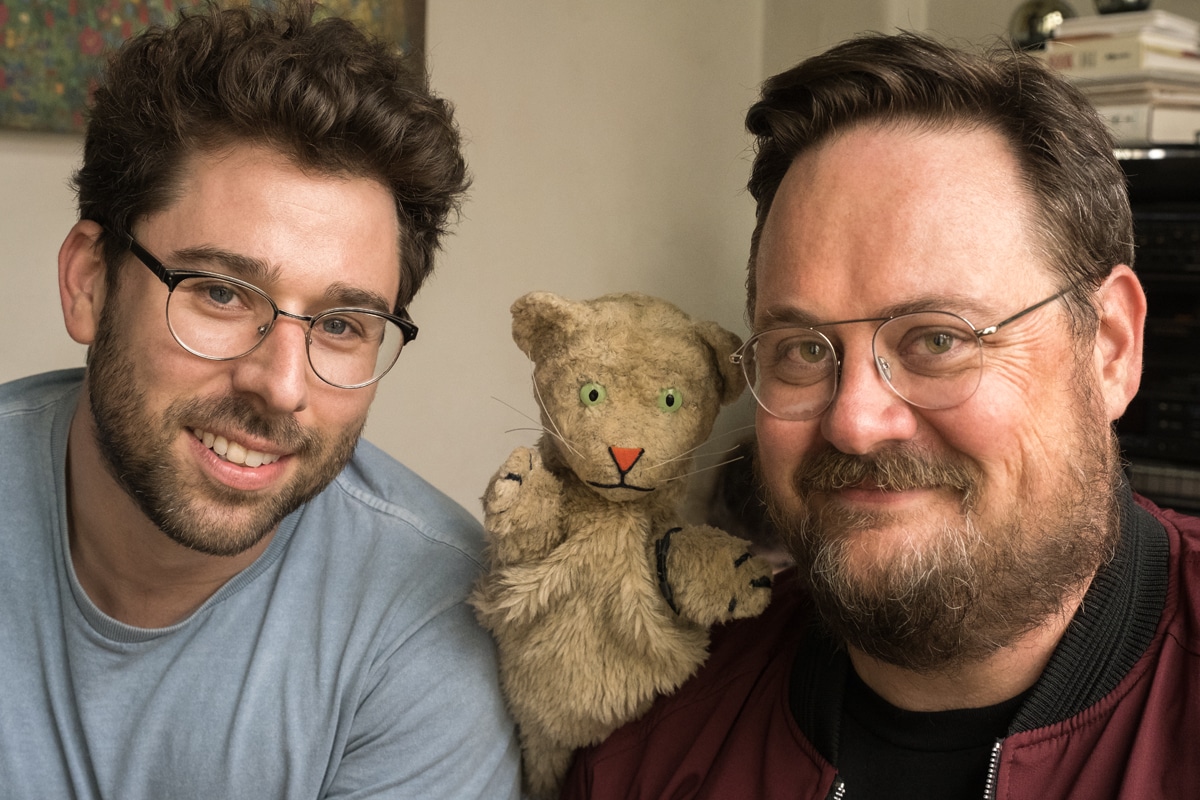
HULLFISH: How long was your first assembly and then how long is the final movie?
McCABE: The final movie is about 1:49 with credits. I think the first cut was a good 45 minutes longer than that. And of course, it’s not just like we were only removing things, because you’re lengthening some places as well, but you’re always trying to boil down to what’s important and what keeps you engaged.
Sometimes it’s powerful to have a longer pause than what was in the first cut. Or the scene will be more interesting if you remove lines from it, or occasionally adding a line — like an ADR or something.
You’re always having to reshape the beginning of the movie on almost every movie I’ve ever worked on. It’s always the set-up that you’re working on the most.
HULLFISH: What was a moment at the beginning that you were trying to get to sooner?
McCABE: We needed to get to the moment where Fred meets Lloyd. The crux of the whole movie is their relationship, and you don’t want to wait too long.
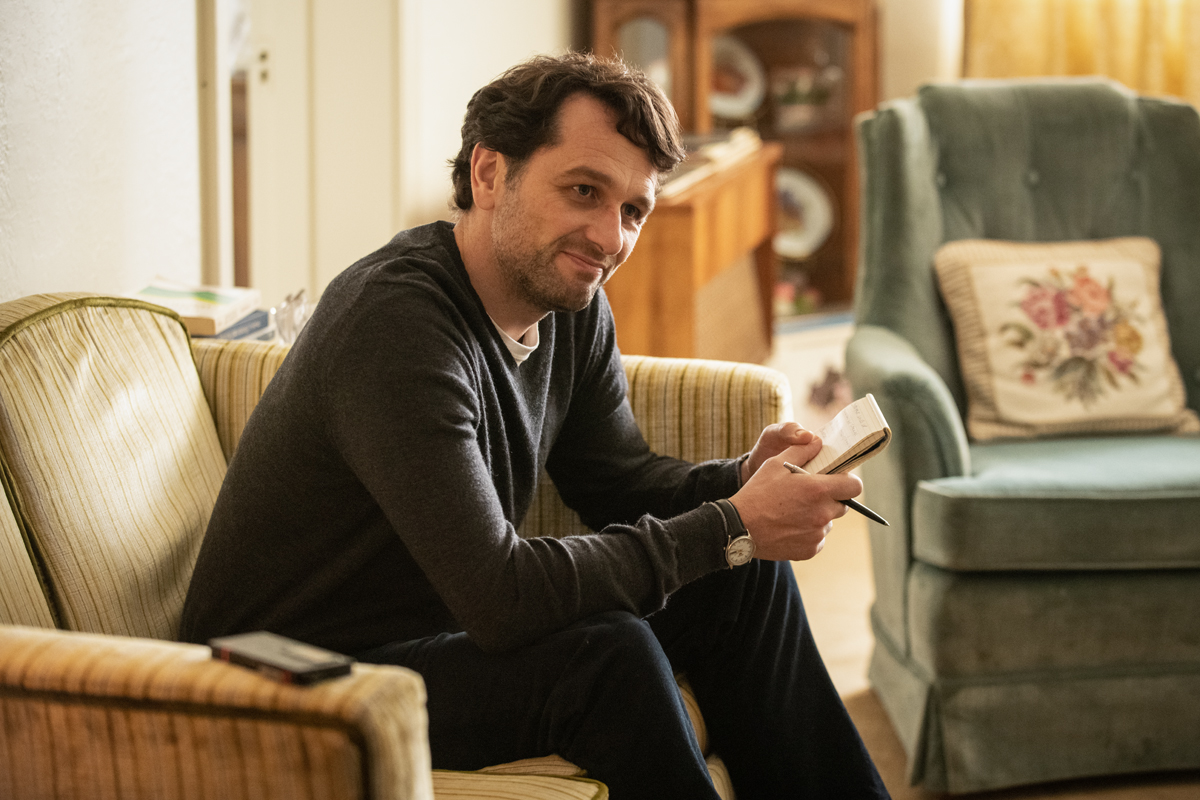
That said — and as you know as well — we’re always cutting out a lot of the beginning, but you hope that they do shoot a lot of the beginning because you need to know who the character is. You need to set-up the story, and if you have nothing there, it’s not going to work.
The truth is, you want a lot of material because you want to be able to hone it down and choose all the best parts and have some choices there. It’s the same with Succession. Those episodes are about an hour long and the first cut is always like an hour and a half or longer. It’s really difficult what to cut out, but because there’s so much good material that means you’re boiling down to something that you feel really strongly works.
HULLFISH: It’s like Michaelangelo with a piece of granite, right? If the shape of that granite was almost the same size and shape as the David, you’d be stuck with that shape. But if you’ve got a bigger piece of marble, you can choose the pose.
McCABE: Absolutely. Yeah, that’s a great analogy. You need something to shape.
HULLFISH: When did the two of them meet in the movie approximately?
McCABE: I think it’s probably about 10, 15 minutes in.
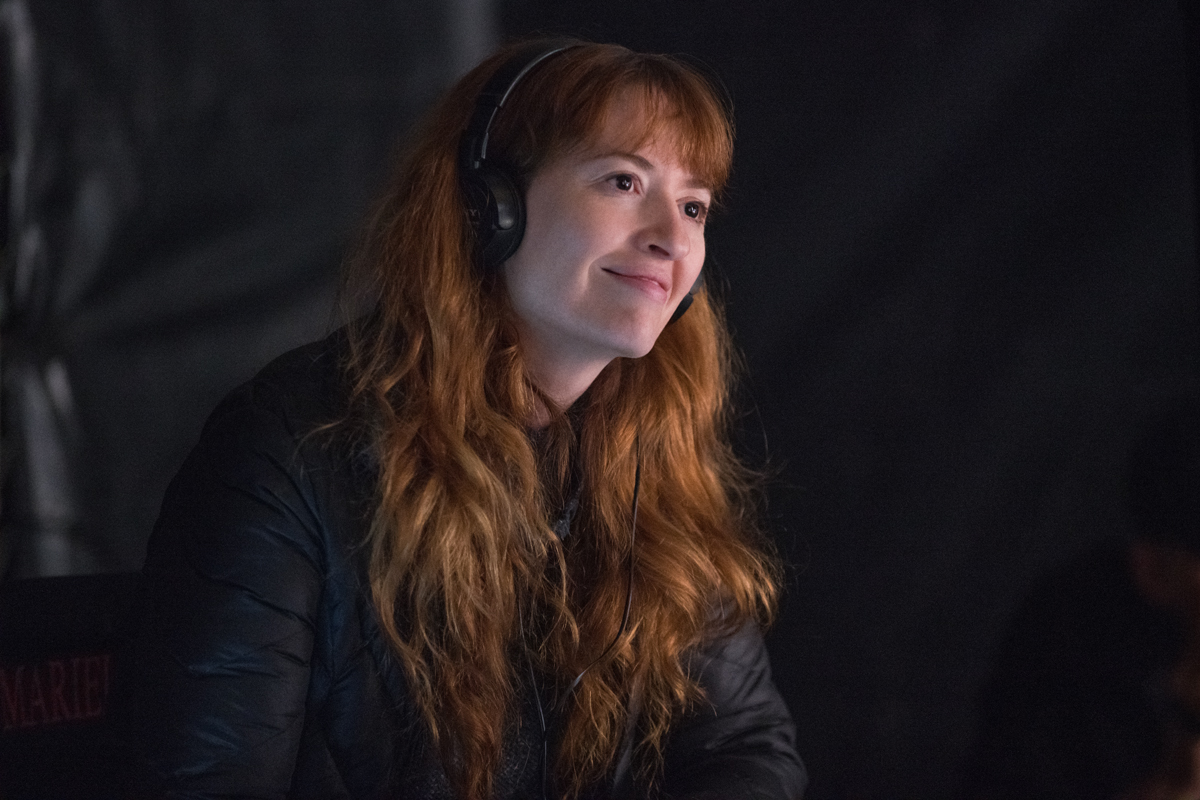
HULLFISH: You said you’d worked with the director before, but you also said that you had this similar experience to one of the characters in the movie. Is that something you discussed with the director? Or if you were trying to win this job from a director that you hadn’t known before would you say, “I lost my mom just like this character lost their mom?”
McCABE: I don’t know that I would have shared something so personal in an interview. In an interview, I would be very much focused on the script and the story in front of me.
When I was working on my previous movie with the director, I shared it naturally in conversation. It definitely helped me work on a movie about loss. Absolutely, I could relate.
There’s a line in the movie where Mr. Rogers turns to Lloyd and says, “I’m sure if she saw you today — what you have become — she would be proud of you.” That’s something that always resonates with me when I watch the movie.
HULLFISH: In my interview about The Goldfinch with editor Kelley Dixon, ACE, she said that when she interviewed for that gig, she mentioned to the director that — similarly to the main character in the movie — she had been orphaned when her mother died at a similar age and had been taken in by her mother’s family but felt like she was always a guest or almost an intruder.
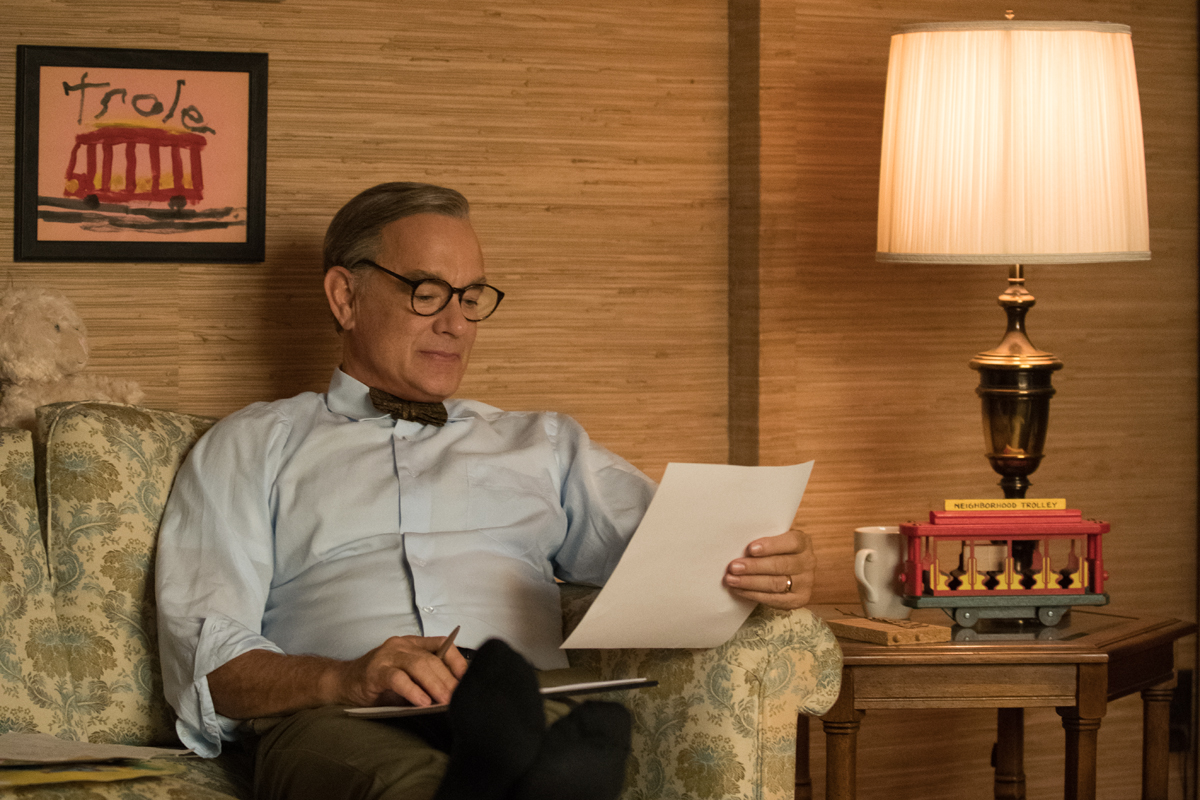
McCABE: In some ways, bringing up trauma is a conversation stopper. But I would say that Fred Rogers is somebody who would say “talk about these things.” One of the messages of the movie is “this is part of life and it’s something you discuss,” you know?
HULLFISH: Absolutely. I’ve worked on some tear-jerker movies, and every time I go through it — even after 100 times — I’ll cry. It’ll choke me up. Do you think that that’s part of being an editor? Having that emotional connection?
McCABE: I think so for sure. I think that people who are drawn to editing have a sense of empathy. You need to be empathetic to your characters and you need to be able to put yourself in the shoes of the person in the scene. When you’re cutting between two people, you need to think, “How does the line make this person feel?”
You’re choosing emotional performances and you need to be able to relate to those emotions. I would say that (director) Marielle Heller is somebody who is incredibly empathetic and very much attuned to people’s emotions. To be a good editor, you need to be able to understand emotion.
HULLFISH: Can you talk to me specifically about shot selection in this scene?
McCABE: Lloyd is coming out of a dream sequence, which was something we kind of came up with in the editing room to really get the sense that Tom was getting in his head. We dissolve from a little puppet of Daniel Tiger to a close up of Lloyd tossing and turning. And then we pop out to the wide to show that he’s out of the dream.
The phone call is interrupting his sleep and Andrea is in bed with him on a wider shot. Then the coverage goes to Fred in his kitchen. The cinematographer — Jody Lee Lipes — has got an incredible eye and for color, too. He played around a lot with like browns and blues in this movie. Fred is in his kitchen, which is very blue. There were various sizes on him. I remember a wide shot that pushes in and then a somewhat intimate profile of his face. Then we cut back to Lloyd’s closeup and we do a pre-lap to the concert hall.
HULLFISH: I love the use of pre-laps. Is there a particular reason — especially in that instance — why you chose to pre-lap into the concert hall?
McCABE: We’re going to a whole new location. There’s the humor of this older guy calling him ridiculously early in the morning and waking him up, so the pre-lap is the music from the concert in the next scene. Fred has invited Lloyd to a concert hall to hear the Uptown String Quartet. There was an actual episode on the original show where they played.
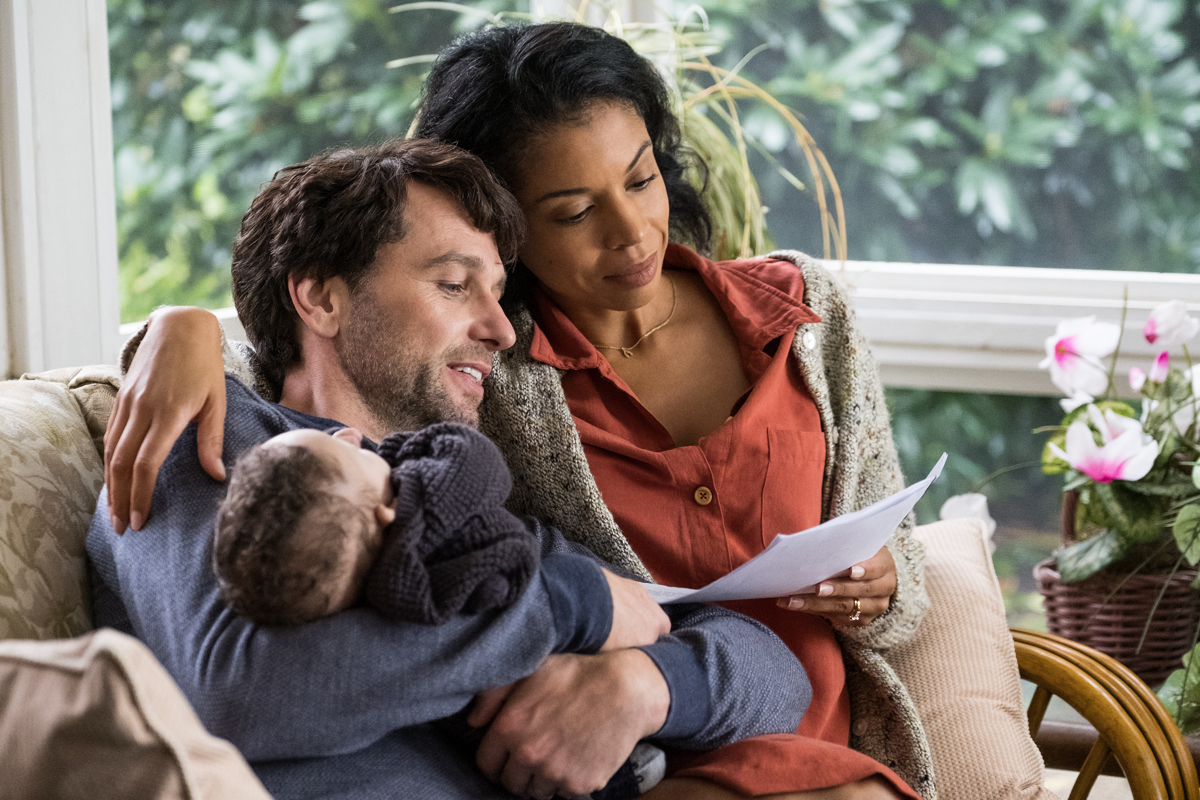
The pre-lap is sort of a shorthand. Fred says, “I want you to come down and let’s talk again.” You’re jumping to a new location. You’re jumping to an entirely different scene where you’re gonna be on stage and hear these wonderful musicians play. So we’re pre-lapping the first note of the song that they play — which is a kind of jarring, strong chord — and it’s a way of making a big leap to another place without having to see him get dressed, get on a train, go up to the concert.
It’s filmmaking language where you don’t have to show all the shoe-leather. But also it’s cool. I feel like sometimes the pre-lap really works to kind of leap you into another situation.
HULLFISH: You mentioned the fact that you and the director came up with this idea in post of having a dream sequence before the scene where Fred calls in the morning. Can you talk to me about how and why that decision was made? That dream sequence was not in the script?
McCABE: I have to give total credit to Mari for this because she was the one who came up with this idea. Lloyd had been watching all this footage of Mr. Rogers and doing all this research and relating to his own childhood trauma and we wanted to show that Fred was getting under his skin, so we went into this little dream sequence and we used little pieces of scenes that had been lifted to create this imaginative dream sequence.
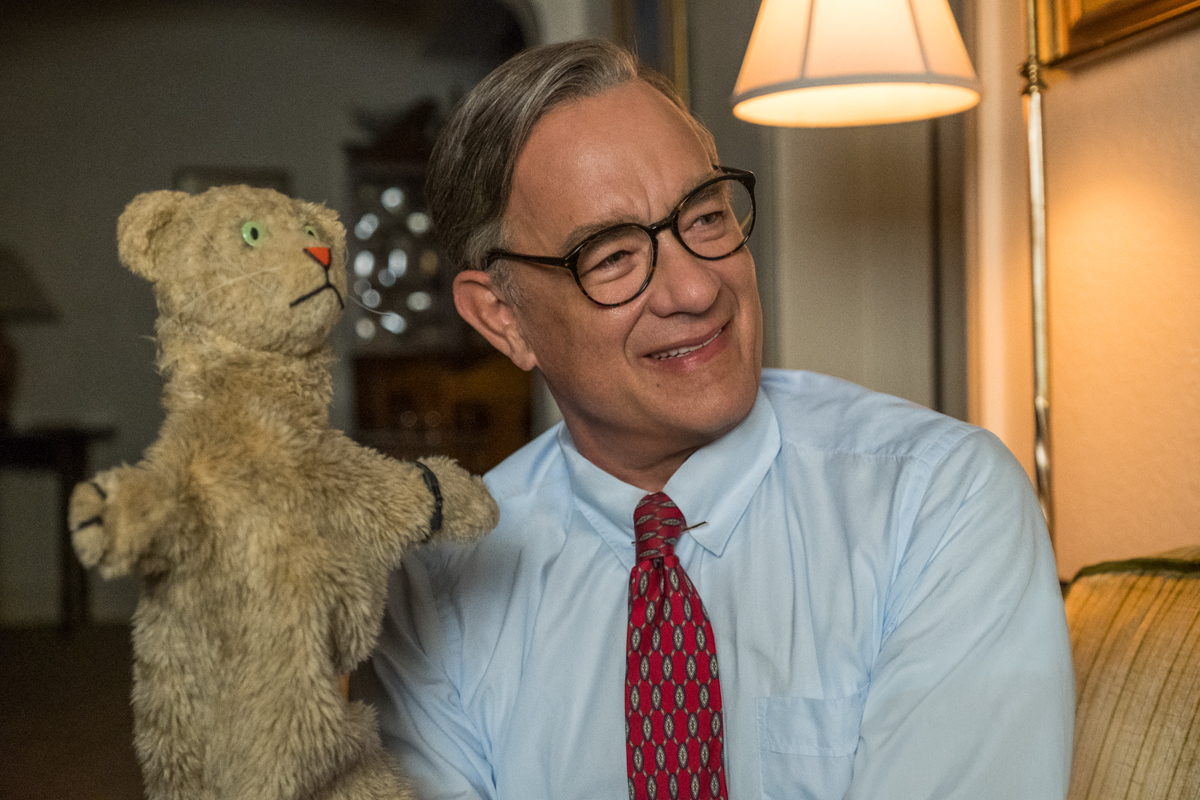
Also, it was an opportunity to show some of the puppets from the original show that weren’t in the movie. People are very attached to all the different puppets that Mr. Rogers had on the actual show, so it was kind of fun to be able to introduce them.
But mainly it was to illustrate that this interview was getting more complicated for Lloyd and it wasn’t easy for him and it was making him think in a different way.
HULLFISH: It’s so interesting that you mentioned about the dream sequence being created in post-production because in Arrival they did the exact same thing — to show that the aliens were getting under Amy Adams’ characters’ skin, Joe Walker and Denis Villeneuve created a dream sequence that was not in the script and it was just done in post. (You can read about that in this Art of the Cut interview with Joe Walker.)
I love that the solution was the same for this movie.
McCABE: Well, I think that editors are always trying to come up with ways to use great footage and to create more beats and moments for places where it’s important in the movie.
HULLFISH: Thank you so much for giving me so much time today. I really appreciate it. It has been a wonderful talk. I think a lot of people will get a lot out of it. Thank you for joining me.
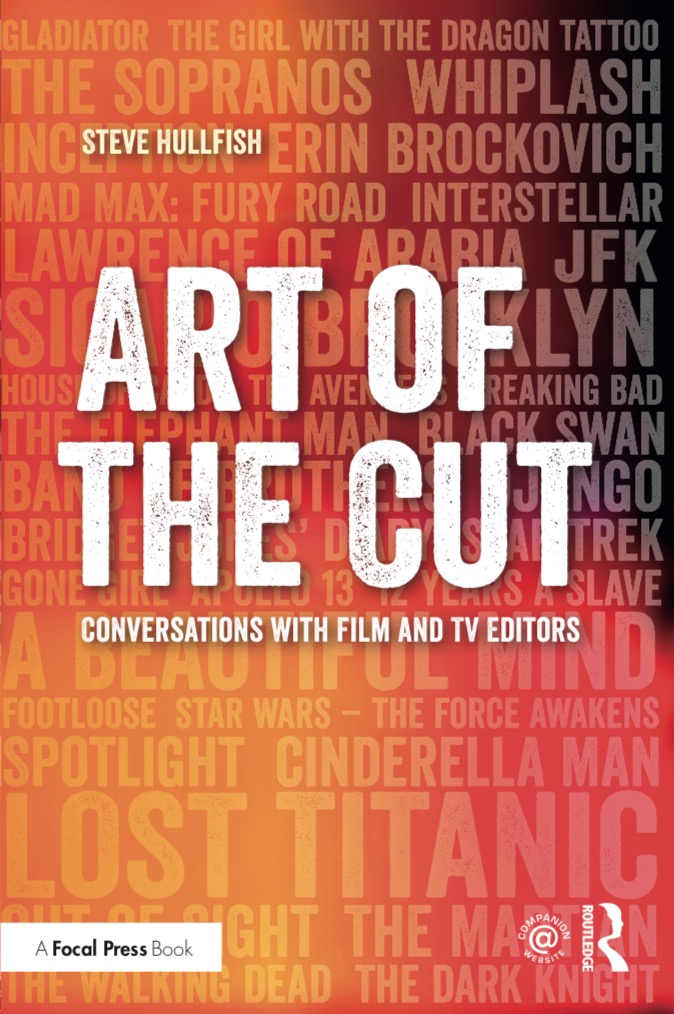
McCABE: Thank you so much, Steve. It’s an honor to talk with you.
To read more interviews in the Art of the Cut series, check out THIS LINK and follow me on Twitter @stevehullfish or on imdb.
The first 50 interviews in the series provided the material for the book, “Art of the Cut: Conversations with Film and TV Editors.” This is a unique book that breaks down interviews with many of the world’s best editors and organizes it into a virtual roundtable discussion centering on the topics editors care about. It is a powerful tool for experienced and aspiring editors alike. Cinemontage and CinemaEditor magazine both gave it rave reviews. No other book provides the breadth of opinion and experience. Combined, the editors featured in the book have edited for over 1,000 years on many of the most iconic, critically acclaimed and biggest box office hits in the history of cinema.

Filmtools
Filmmakers go-to destination for pre-production, production & post production equipment!
Shop Now